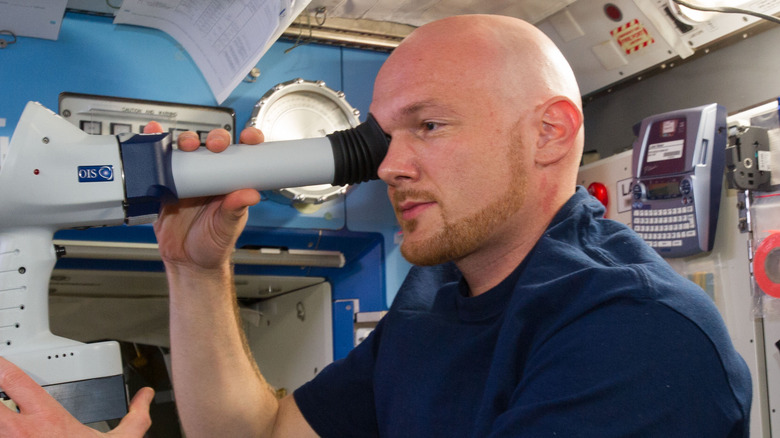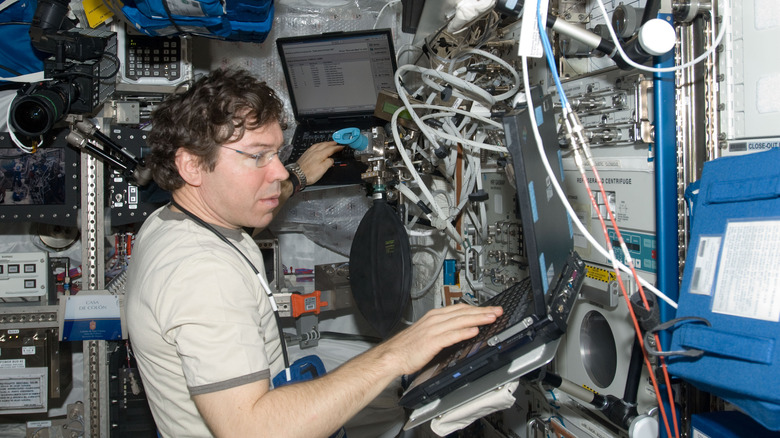Why Visiting Space Changes Astronauts' Eyesight
Of all the changes that happen to the human body in space, one concerning issue is changes in vision. According to NASA, around one-third of astronauts showed changes to their vision even on space trips as short as two weeks in duration. The incidence seems to get much higher when the missions last longer, and around 70% of astronauts who stay on the International Space Station experience swelling at the back of the eye. It's not as if astronauts are going completely blind or that their eyesight becomes so poor that they can't do their jobs, but given how important sight is for the kinds of work that astronauts do, it's a concern that so many of them experience worsening vision.
What causes these vision problems? The most common theory is that it is related to how fluids are distributed throughout the body. When we are on Earth, gravity pushes all the fluids in our body downwards, so systems like our heart and cardiovascular system have evolved to push fluids up in the opposite direction. When a person is in space in a microgravity environment, they no longer have this gravity pushing down, but the body's systems still push fluids upward. So fluids tend to pool in the upper parts of the body – that's why many astronauts return home from space with puffy faces.
The theory is that this fluid accumulates around the eyes or at the back of the eyes, which could compress the eyeballs and cause vision problems, forcing experts to come up with some pretty crazy solutions. Other factors that might contribute to this issue include inflammation, high levels of carbon dioxide, and overfull blood vessels. Although most of these effects go away after a time once astronauts come back to Earth, for some the changes continue to persist even after they are back in a normal gravity environment.
Researching how spaceflight affects the eyes
To learn more about this issue and how treatments can be developed to manage it, NASA runs experiments on the International Space Station. The agency uses a special camera to look at the back of the eye with a technique called coherence tomography, which helps track how much fluid is accumulating there. The research being done on the station shows how these changes develop over time. "We didn't see swelling of the optic disc when we flew two-week shuttle missions, but we did on long-duration missions, so there is definitely a time element," said NASA scientist Steve Laurie.
He said that the condition, technically called Space-Associated Neuro-Ocular Syndrome (SANS), is most likely caused by the fluid issue: "We still believe headward fluid shift underlies SANS, so the question is how it causes these effects. On top of that, you have modifying factors and variability in outcomes in different crew members. We do not know why this variation exists."
Understanding this topic is going to be more important for future long-term missions, such as planned crewed missions to Mars. "The idea of embarking on a long-duration flight to Mars without having made this discovery is mind-boggling," said NASA astronaut Michael Barratt who served on the space station in 2009. "We would have had people taking voyages of up to three years and coming back with all these problems that would have taken us forever to figure out."

